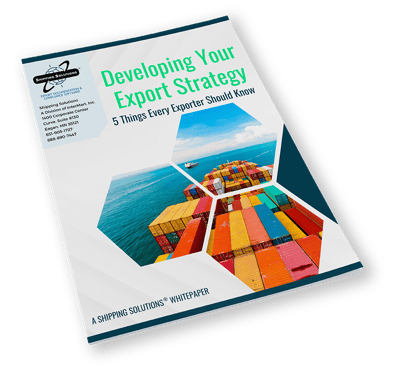Free Download:
Developing Your Export Strategy: 5 Things Every Exporter Should Know
Don’t be an accidental exporter!

Too many companies start exporting by accident. International orders come in through your website or at trade shows, and they’re too big to ignore. And while fulfilling these orders seem simple enough, there are plenty of problems that can pop up at any time. Problems that could cost your company money and put you at odds with U.S. export regulations.
A little planning can help you avoid these problems and dramatically increase the odds of your success overseas. This free white paper helps you create an export strategy that will help you maximize your export profits and avoid common pitfalls.
In this whitepaper, you’ll learn how to:
- Develop your export strategy: You’ll learn how to research products to sell, markets in which to sell them and how to set prices; different strategies for selling internationally; how to plan for and implement after-sale support; and how to handle intellectual property concerns.
- Review and understand export and import regulations: Learn about your compliance responsibilities, including proper product classification and understanding the different types of trade restrictions. Learn how to research if your product qualifies under a free trade agreement (FTA).
- Prepare your goods for shipping: Learn how to identify partners like freight forwarders and how to choose a mode of transport; how to use Incoterms; and product labeling and insurance requirements.
- Complete your export paperwork: Learn how to use the right documents to ensure your goods get to where they’re going in a timely manner, that they clear customs without unexpected fees, and you get paid on time.
- Make sure you get paid for your goods: Learn how to understand payment options and find an international banking partner.
If you go into the export journey prepared, you’ll have much less to worry about down the road.
Get started now by downloading this free whitepaper.